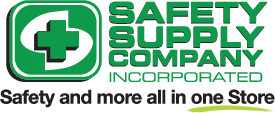When working with hazardous substances such as gases, solvent powdered chemicals and sprays, RPEs (Respiratory Protective Equipment) are used to control exposure and improve air quality and ventilation. Today we’re going to discuss how, when and why RPE is necessary for the environment you’re in.
Firstly, let’s discuss hazardous substances, what are they?
Hazardous substances are defined as any toxic, harmful, corrosive, irritant of asphyxia substance or a mixture of substances including dusts, fumes, gases, mists and vapors, that may produce adverse health effects in individuals when exposed to sufficient quantitates. The list can go on as common gases found in the household such as chlorine, ammonia and wood dust; have adverse effects on our respiratory organs, causing ill health and early death.
RPE is divided into two main types:
• Respirators (filtering devices), use filters to remove contaminants in the workplace air. Filter selection and use requires due care and attention to ensure the safety of wearers.
• Breathing apparatus (BA), needs a supply of air from a clean source (e.g. an air cylinder or air compressor). BA may be used in situations with reduced oxygen levels.
The law requires employers to prevent or control the exposure of employees and others to hazardous substances at work. RPE should be used as a last resort- when inhalation exposure risk remains after you have put every other practicable measure in place. It may also be used as additional protection in case other control measures fail to operate.
Good health, safety training and support can minimize or remove the risk to employees of respiratory health issues. Risk assessments should be carried out to reduce the effects of dangerous substances and environmental solutions put into place, for example adequate ventilation, warning signs and appropriate equipment. All employees should be kept properly informed about risks associated with the handling of dangerous substances and be provided with appropriate guidelines for handling them as well as relevant health checks.
Why is RPE a last choice for protection?
RPE only protects the wearer, controlling the environment around you can protect everyone working in the area. RPE should NOT be used in environments where oxygen levels are low.
To make sure wearers are getting the most protection from RPEs, it must be correctly selected, used and maintained. A mismatch between the RPE and the environment is costly & dangerous.
Users should be trained to use and maintain RPE.
Safety Supply stocks half and full face RPE for your convenience. Our knowledgeable staff would be more than happy in assisting you with choosing the correct gear for your environment. Visit our website to see our selection. Click Here: http://bit.ly/2ENpP0k

